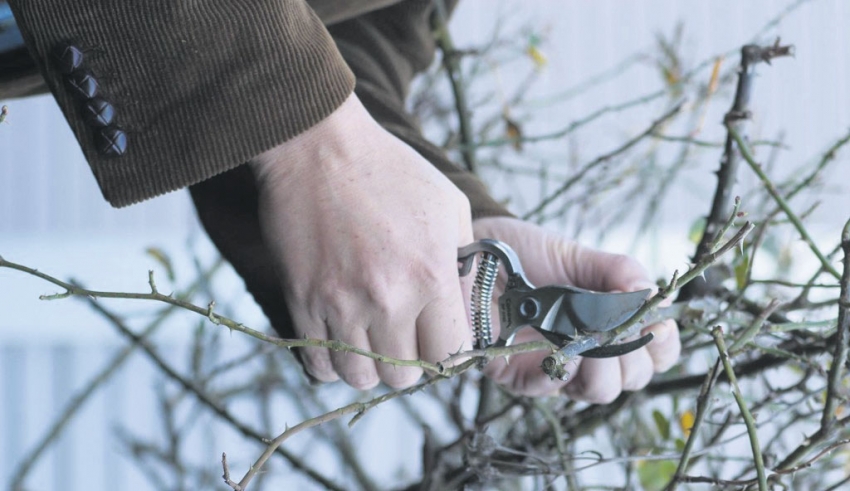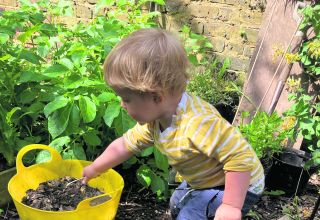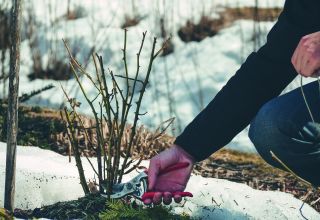
It may be the task you haven’t got round to but in early spring there’s still time to prune, cut back and shape
All our garden plants benefit from pruning, but it’s important to prune at the right time of year, in the right way.
The darker, colder and short days of midwinter are not always ideal to get out and take on the task.
But don’t fret it isn’t too late. There is still plenty of time in late February and well into March to prune, cut back and encourage new life into your plants and shrubs.
Almost all plants benefit from being pruned in the winter months, while they’re dormant. Pruning in winter encourages flowers and fruit, can encourage a good shape, promotes strong growth and helps to stop disease taking hold.
So as we start the hopeful downward spiral to spring here’s what action you can still take when it comes to pruning.
Roses
Many types of rose can be pruned in winter, including floribundas, hybrid teas, shrub roses and climbing roses. Rambling roses are pruned in late summer, but can be renovated in late winter. As a general rule, cut back thin, weak stems the most, and thick, vigorous stems the least. Aim to leave plants anything from 15cm to 45cm tall, depending on the original size of the plant and your preference.
Fruit bushes
Fruit bushes, including blueberries and blackcurrants, plus gooseberries and redcurrants are best pruned in late winter. As a general rule, remove some old wood each year, creating a goblet shape and leaving healthy young branches that will produce large crops in years to come.

Apple and pear trees
These can be pruned through to mid-March to encourage fruiting. Aim to create a wine-glass shape, with evenly spaced branches rising up from the trunk in a circle around a hollow centre. Cut off any water shoots at their very base and remove any dead, diseased or crossing branches
Deciduous ornamental trees
Again prune through to March, remove smaller branches arising from the trunk to create a clean, bare stem at least 90-120cm tall. Remove any branches that impede access or block mowing, but cut sensitively, thinning out rather than chopping back the whole canopy.
Buddleja davidii (butterfly bush)
New plants should be cut back now to create a short, stubby framework of branches 15-90cm high, depending on how tall you want the shrub to be. Thereafter, you can keep the shrub neat, vigorous and free-flowering by pruning back hard annually during early spring. As new growth starts to break, remove all of the previous year’s growth to two or three pairs of buds from the main framework.
Forsythia
Do not prune forsythia during the first few years after planting. However, once established, older plants that are left un-pruned become woody at the base where few flowers are produced. To avoid this, prune after flowering has finished, by cutting out one-in-three of the main stems at the base, starting with the oldest. Neglected plants can be rejuvenated by cutting back all flowered shoots to a strong bud near to the base of the shrub. Trim forsythia hedges after flowering too, then leave un-pruned until the following year otherwise you risk removing all of next spring’s flowers.
Hebe
Hebes grown for their foliage rather than their flowers, can be pruned in spring to achieve a compact and neat habit. Neglected plants can be cut back hard since new shoots will be readily produced from near to the base. Hebes grown for their flowers and foliage should only pruned to remove frost-damaged, dead or diseased growth. You can also use a pair of shears to trim all hebes over lightly to encourage bushy growth. Variegated hebes that produce all-green shoots, should have these removed completely.
Spiraea
Spiraeas are a varied group including spring and summer flowering forms, some of which flower on new growth produced this year and others that flower on old wood produced in previous seasons. Spirae. Late spring flowering spiraeas as well as summer-flowering varieties that bloom on old wood should not be pruned until after flowering. Also, spiraea hedges should be pruned annually, by lightly cutting back after flowering to maintain a dense and neat habit.
Why early spring is the best time to prune
- The plant is dormant. It’s not putting energy into producing leaves, flowers, buds, or new stems.
- There are no diseases or fungal pathogens in the air in winter. Late summer and fall are the worst time of year to prune because airborne pathogens reach their peak at that time.
- You can see the plant structure better when there are no leaves.










